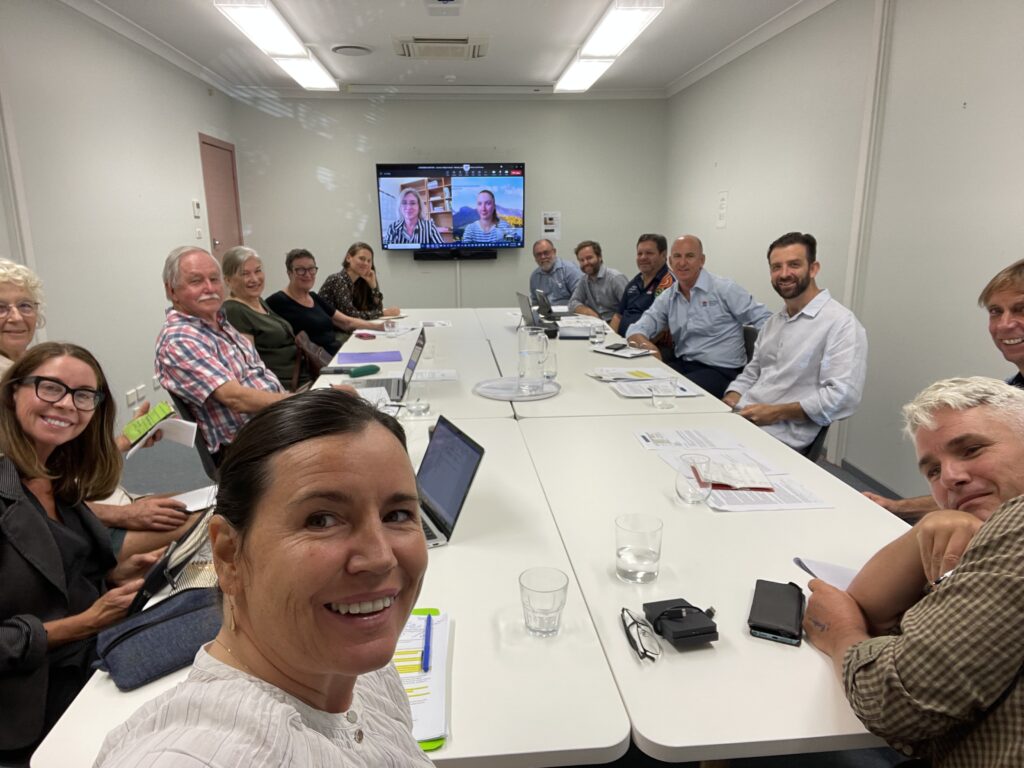ABOVE: The A Way Forward group meets with the NRRC. This photo taken in May by Hanabeth Luke
Susanna Freymark
It has been a difficult few days as thousands of residents receive that call.
The call from the Northern Rivers Reconstruction Corporation telling them their property is ineligible for flood funding.
The calls are being delivered by Service NSW staff informing residents of the decision but not giving details about how the decision was made.
Beverly Jan Rawson from Broadwater said, “it has been the hardest day since the floods. We are totally invisible.”
Residents have waited 16 months to see whether they would receive assistance for a home buyback, retrofitting or house raising.
A group called A Way Forward was formed and it has been meeting with the NRRC since October.
Members include community leaders, academics, town planners, legal experts, environmentalists and economists.
The group last met with the NRRC two days ago – on Monday, June 26.
At that meeting it became increasingly clear that the resources to return Lismore and neighbouring towns to health were “woefully inadequate”, David Tomlinson of A Way Forward said.
Members of A Way Forward are calling on state and federal governments to provide more funding urgently to the NRRC to extend the Resilient Homes program.
“The NRRC has received $700million for the first stage of the buyback program. This tranche of funding is easily exhausted,” Mr Tomlinson said.
“The NRRC received more than 6400 registrations of interest from across the Northern Rivers but only 1011 buybacks are underway.
“Residents who receive no help from either tranche are likely to become trapped on the floodplain with nowhere to go. House values have plunged since the floods and flood insurance is not available for homes or businesses.”
The eligibility criteria for buybacks, specifically the risk categories identified in the maps, generated concerns, Mr Tomlinson said.
He said the NRRC explained that it employed a widely accepted methodology of assessing a 1 in 500-year flood risk. This methodology was applied across seven local government areas, taking into account factors such as velocity, depth and danger.
Council models, SES data and other inputs including the recommendations from the flood inquiry were used to define the risk criteria.
“When asked why the 2022 flood was not included, the NRRC said it wasn’t included because it was ‘an extraordinary event that was unlikely to happen again’,” Mr Tomlinson said.
At the meeting, Professor Jerry Vanclay stressed the importance of peer review in validating the methodology applied.
He provided evidence that the February 2022 flood was predictable and needed to be considered in planning.
A Way Forward is concerned about the equity of the offers across the community.
With the limited funding available, the group recognises that Lismore is the most important area of strategic focus for the rebuild at this stage.
Group member Dr Hanabeth Luke said there were grave concerns that heavily impacted downstream communities felt they were being left behind.
“The speed and impact of the 2022 floodwaters on upstream and downstream communities must also be recognised,” Ms Luke said.
“Whether or not that includes house-raising or other measures, we need to think about adaptation for the whole catchment.”
The meeting concluded with questions about the release of NRRC tranche 2 funding.
NRRC has made representations to the government requesting the release of the second tranche of funding.
A decision on that now rests with state and federal governments.
“We must take urgent steps, locally and nationally, to adapt to a future which is vastly different from the one we know,” Mr Tomlinson said.




